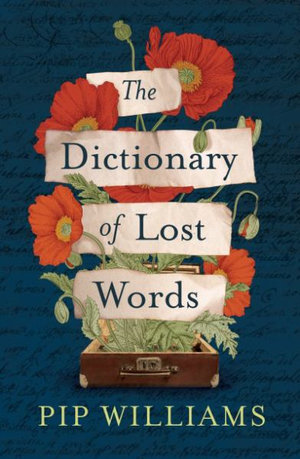Joy's Book Blog

Joy's Book Blog


I lost a whole weekend to “The Dictionary of Lost Words.” Originally, I had planned to be very industrious: clean the house, fold the laundry, go the grocery store. In the end, only one of those things happened (I decided we all needed to eat, but the house and laundry could wait). The rest of my weekend was devoted entirely to this book. “The Dictionary of Lost Words” is told from the first-hand perspective of Esme, who begins the story as a motherless child whose father is a lexicographer. I didn’t know what that meant either, but it’s “a person who compiles dictionaries.” Da (it’s the only way he is known throughout the entire book, a neat touch IMO) works in the Scriptorium helping to compile the first Oxford English Dictionary (OED). As a young child, Esme would sit beneath the sorting table, and one day, a stray slip of paper with the word “bondmaid” fell and was collected secretly by her. With that small act of defiance, Esme’s life grew until she too was collecting words, although not the same kind of words her father and the other male lexicographers were collecting. Instead, Esme focused on “women’s words;” words that were not deemed appropriate for the OED because they were used by women and other poor souls on the bottom of the social ladder. The book follows Esme’s life as she weaves in and out of her love of words. It takes her places she never imagined going, but she always comes back to her own “dictionary.” What made the book so much fun for me is not only Esme’s story, but also the story of how the first definitive dictionary came into existence. I never thought about it before, but how did they go about creating the first dictionary? Who decided what to include and what not to include? And how can you possibly include all the various meanings of a single word? These are deep and interesting questions, but the author tackles them and more in a way that kept me reading. Plus, as soon as I finished the book, I was Googling some of the characters to see if they were real (a sure-fire sign for me that a historical fiction book was a hit). And lo and behold, the word “bondmaid” really was omitted from the first edition of the OED and no one knows why (because young Esme stole it off the sorting room floor, that’s why!) As a warning, there is some “inappropriate” language featured in this book, but not frivolously; their inclusion was very much a deliberate choice by the author to remind us that these words did not start off as “bad.” Instead, it was human beings that changed their meaning into something vulgar. I think that lesson is important even today. As we all know, there are plenty of words that are considered inappropriate where 10, 20, 30 years ago they were commonplace and acceptable. So if you don’t want to read anything with “bad language,” this may be a book to steer clear of (although you’d be missing out on a great story). Overall, I loved this book. I found it’s storyline unique and interesting, but then I also love words and the English language so of course I would. Highly recommend!